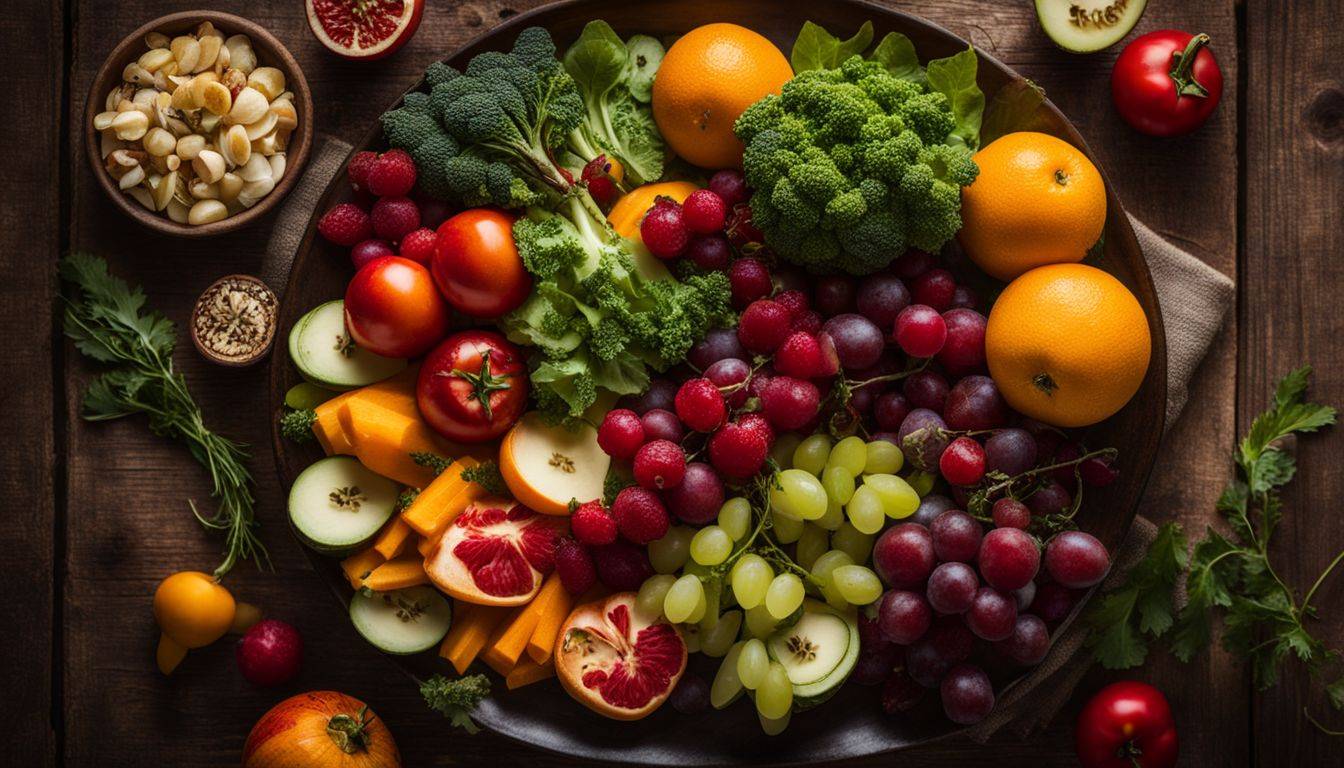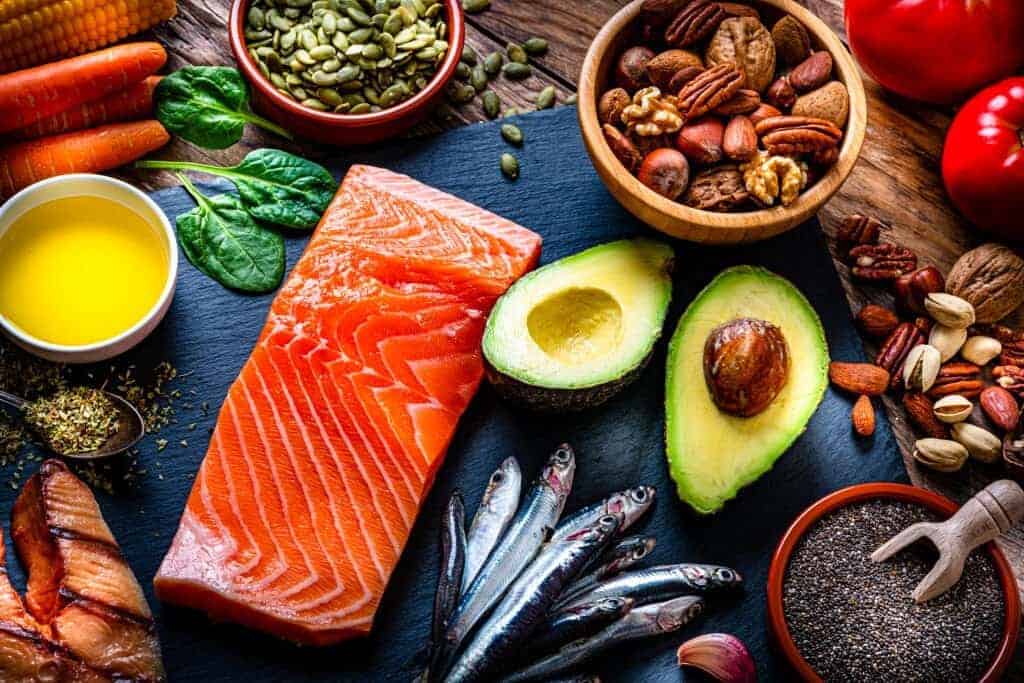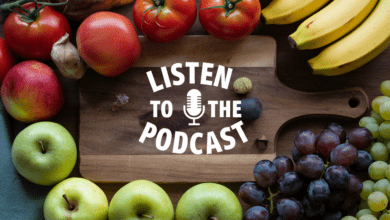Tired of Failed Diets? Unveiling the Top 10 Fool Proof Techniques for Rapid Weight Loss!

Article created by David James 09/12/23
Embracing the challenge of weight loss can sometimes feel like scaling a mountain. I get it; this struggle is real and deeply personal. – I am no stranger to it myself. After devoting countless hours to understanding effective strategies from innumerable studies, this article has been crafted with care for you.
It enlightens you about ten scientifically-backed dieting methods that can help you gently navigate the path towards healthier weight loss. So let’s explore this journey together, discovering ways to shed those extra pounds while nurturing our bodies.
Key Takeaways
- Eating varied, colorful, and nutritionally dense foods can help with weight loss. Include fruits, vegetables, lean meats, and whole grains in your diet.
- Keeping a food and weight diary helps track your food intake and identify bad eating habits. It can also assist in setting up a personalized diet plan.
- Eliminating liquid calories from sugary drinks like soda and juices can reduce daily calorie intake.
- Controlling portions by using measuring cups, reading food labels, and eating slowly can support healthy weight management without depriving yourself of your favorite foods.
- Cutting calories doesn’t mean sacrificing flavor. Focus on incorporating nutrient-dense foods into your meals, and experiment with spices to enhance taste without adding extra calories.
- Regular physical activity and exercise are crucial for successful weight loss. Incorporate both cardiovascular exercises (like walking) and strength training activities (like lifting weights) into your routine for optimal results.
- Mindful eating promotes behavior modification by paying attention to hunger cues, savoring each bite, and being aware of the food you consume.
- Meal planning and preparation save time, ensure a variety of nutritious foods are included in your diet plan, prevent unhealthy last-minute choices, control portion sizes, and avoid excessive calorie consumption, which ultimately supports successful weight loss.
- Setting realistic goals helps maintain motivation throughout the journey towards healthier living. Start small with achievable targets that focus on behavior changes rather than solely on the number on the scale. Celebrate milestones along the way to stay positive!
- Having a support system increases the chances of success in making behavioral changes for weight loss. Surround yourself with people who understand your goals to provide emotional support and keep you accountable.
Establishing a Healthy Diet Plan

To establish a healthy diet plan, it is important to eat varied, colorful, and nutritionally dense foods that provide essential vitamins and minerals for optimal health.
Eat varied, colorful, and nutritionally dense foods
I love eating foods that are full of color and good for my body. They offer a lot of health benefits. Think about bright fruits, green veggies, and lean meats. These foods are high in nutrients but low in calories.
They help me stay fit and strong. Some great options include berries, spinach, and chicken breast. There is also fish like salmon, which is very healthy too! I try to make sure I eat food from each group every day: vegetables, fruits, grains, and proteins.
Not only does it keep my meals exciting, but it helps with weight loss as well! All these different foods can help you lose weight in a healthy way! So why not give this fun diet plan a try? It’s worked wonders for me!
Keep a food and weight diary
Starting a food and weight diary can be a big help for weight loss.
- It helps you track your food intake. This helps to know the amount and type of food you eat each day.
- A food diary can help spot bad eating habits. You might see that you eat too many sweets or not enough fruits and veggies.
- It is also good for noting down your weight changes. You can see if you are losing, gaining, or staying the same.
- The diary does not have to be a book. You could use an app on your phone or a tool online.
- Writing in this diary can help you reach your goal of losing weight faster.
- Eating at the right times also counts for healthy weight management.
- What’s more, it helps pick foods that are low in carbs, fat and have a low glycemic index (GI).
- Most of all, it helps set up a diet plan that works best for you.
Eliminate liquid calories
Drinks can be full of sugar and calories. Make sure to choose drinks that don’t add extra weight. Water is the best choice for quenching your thirst. It does not have any calories at all! Other low-calorie options include tea, coffee, or diet soda if you want a treat.
Avoid drinks like soda, sweet teas, juices, or alcohol, which are high in calories. This helps to keep your calorie intake down each day. You may find that cutting out these sugary drinks supports your weight loss goals by providing fewer calories too!
Measure servings and control portions
Controlling portions is an important part of a healthy diet plan. Here are some strategies to help you measure servings and control portions:
- Use measuring cups and spoons to accurately portion out your food.
- Read food labels to determine serving sizes and calorie content.
- Use smaller plates and bowls to help control portion size visually.
- Eat slowly and savor each bite, allowing your brain time to register that you’re full.
- Avoid eating straight from the bag or container, as it can be easy to overeat without realizing it.
- Be mindful of liquid calories from drinks like soda, juice, and alcohol, as these can add up quickly.
- Fill half of your plate with fruits and vegetables, one-quarter with lean protein, and one-quarter with whole grains for a balanced meal.
Cut calories, not flavor

When it comes to losing weight, cutting calories doesn’t mean sacrificing flavor. You can still enjoy delicious meals while reducing your calorie intake. Focus on incorporating nutrient-dense foods into your diet, such as fruits and vegetables, lean proteins, and whole grains.
Experiment with spices and herbs to enhance the taste of your meals without adding extra calories. Look for healthy recipes online that prioritize flavor without compromising on nutrition.
Portion control is also important – measuring servings can help you maintain calorie balance. By making these small changes, you can cut calories while still savoring the flavors of your favorite dishes.
The Importance of Exercise

Regular physical activity and exercise not only aid in weight loss but also contribute to overall health and well-being.
Regular physical activity and exercise
Regular physical activity and exercise are essential for maintaining a healthy weight and overall well-being. When we engage in regular exercise, it can help us burn calories, build muscle strength, and boost our metabolism.
This combination of factors is crucial for weight management and successful weight loss. By incorporating both cardiovascular exercises like walking or biking and strength training activities like lifting weights or doing push-ups into our routine, we can maximize the benefits of exercise.
Regular physical activity not only helps with weight loss but also reduces the risk of chronic diseases such as heart disease, diabetes, stroke, high blood pressure, and obesity. It’s an important part of living a healthy lifestyle and should be included when trying to lose weight or maintain a healthy body weight.
Incorporating strength training
Strength training is an important part of any weight-loss journey. Not only does it help with fat loss, but it also maintains or builds muscle strength and size. When you do resistance exercises like lifting weights or using resistance bands, your muscles have to work against a weight or force.
This increases your muscle strength and helps you burn calories even after you’re done exercising. Incorporating strength training into your routine can contribute to both short- and long-term weight loss goals.
Plus, it has other health benefits, like stronger bones and helping manage various conditions. So don’t forget to include some muscle-building activities in your exercise plan – it can make a big difference in reaching your weight management goals!
Walking for health
Walking is a simple and effective way to improve your health, especially when you’re looking to lose weight. It’s a low-impact form of exercise that anyone can do, and it doesn’t require any special equipment or gym membership.
Walking regularly can help with weight loss by burning calories and reducing belly fat. It also has other benefits like improving cardiovascular fitness, boosting metabolism, strengthening muscles, and improving body composition.
So if you’re looking for an easy and accessible way to incorporate exercise into your weight-loss plan, walking is a great choice.
Behavioral Changes for Success
Incorporate mindful eating into your daily routine by savoring each bite and paying attention to hunger cues.
Mindful eating
Mindful eating is an important strategy for successful weight loss. It involves paying close attention to your eating habits and being aware of the food you consume. By practicing mindful eating, you can develop a healthier relationship with food and improve your overall well-being.
This approach encourages you to listen to your body’s hunger and fullness cues, eat slowly, savor each bite, and be more in tune with how different foods make you feel. Mindfulness training has been shown to reduce binge eating and emotional eating, which are often linked to poor diet choices and excessive calorie intake.
So, by incorporating mindful eating into your daily routine, you can promote behavior modification, manage stress better, achieve a balanced diet, and ultimately reach a healthy weight.
Meal planning and preparation
Meal planning and preparation are helpful strategies for successful weight loss. Here are some tips to make meal planning and preparation easier:
- Make a weekly meal plan: Plan your meals ahead of time, including breakfast, lunch, dinner, and snacks. This helps you avoid last-minute unhealthy food choices.
- Choose a variety of nutritious foods: Include fruits, vegetables, whole grains, lean proteins, and healthy fats in your meal plan. This ensures that you get all the necessary nutrients for good health.
- Cook in batches: Prepare larger portions of meals and freeze leftovers in individual servings. This saves time and makes it easier to stick to your healthy eating plan.
- Pack your own lunch: Bringing homemade lunches to work or school allows you to control what goes into your meals. It also helps you save money and avoid unhealthy fast-food options.
- Use portion control strategies: Measure out appropriate serving sizes using measuring cups or a food scale. This helps prevent overeating and ensures you’re not consuming too many calories.
Setting realistic goals
Setting realistic goals is crucial for successful weight loss. It helps you stay motivated and focused on your journey. Here are some strategies to help you set achievable goals:
- Start small: Break your overall weight loss goal into smaller, more manageable targets. Aim to lose a few pounds at a time, rather than setting unrealistic expectations.
- Be specific: Define your goals clearly and be specific about what you want to achieve. For example, instead of saying “I want to lose weight,” say “I want to lose 10 pounds in the next three months.”
- Set realistic timelines: Give yourself enough time to reach your goals without putting too much pressure on yourself. Slow and steady progress is more sustainable in the long run.
- Focus on behavior changes: Instead of solely focusing on the number on the scale, concentrate on adopting healthy habits like eating more fruits and vegetables or exercising regularly.
- Celebrate milestones: acknowledge and celebrate each milestone you achieve along the way. This can motivate you to keep going and maintain your progress.
Finding a support system
Having a support system is essential when it comes to making behavioral changes for weight loss. Surrounding yourself with people who understand and encourage your goals can greatly increase your chances of success.
They can provide emotional support, hold you accountable, and offer helpful advice or tips along the way. Research shows that participating in weight-loss programs that incorporate social support leads to better outcomes in terms of weight reduction and long-term maintenance.
So don’t be afraid to reach out to friends, family, or even join online communities where you can connect with others who are on the same journey as you. Together, you can motivate each other and celebrate your victories along the way!
Effective Dieting Strategies for Weight Loss
When it comes to effective dieting strategies for weight loss, there are a few key approaches that can make a big difference. First and foremost, focusing on healthy eating habits is essential.
This means incorporating a balanced diet with nutrient-dense foods like fruits, vegetables, lean proteins, and whole grains. Portion control is also important to ensure you’re not overeating.
Another strategy that can help with weight loss is to engage in regular physical activity. Finding ways to incorporate exercise into your daily routine is crucial. This can include activities like walking, swimming, or even strength training exercises.
By staying active, you’ll be burning calories and building muscle, which aids in weight loss.
In addition to eating well and exercising regularly, making mindful choices about what you eat is important. Taking the time to savor your food and really paying attention to hunger cues can prevent mindless snacking and overeating.
Finally, it’s important to remember that lifestyle changes are key in long-term weight loss success. Making small adjustments like meal planning and finding a support system can make all the difference in reaching your goals.
By implementing these effective dieting strategies for weight loss- focusing on healthy eating habits, staying active through regular exercise, and practicing mindful eating choices- one can achieve sustainable results in their journey towards achieving their desired body weight while maintaining overall health and wellness at the same time
Final Thoughts and Recommendations
In conclusion, these 10 effective dieting strategies can help you achieve your weight loss goals. By following a healthy and balanced diet, incorporating regular exercise, making behavioral changes, and adopting mindful eating habits, you can successfully lose weight and improve your overall health.
Remember to set realistic goals, seek support when needed, and prioritize long-term wellness. Stay motivated and committed to your journey towards a healthier lifestyle!
Conclusion
In conclusion, these 10 effective dieting strategies for weight loss can help you achieve your goals. Remember to eat a variety of nutritious foods, control portions, and eliminate liquid calories.
Incorporate regular exercise into your routine and make behavioral changes that support healthy habits. By following these tips, you can successfully lose weight and improve your overall health.
FAQs
1. Can I lose weight by following these dieting strategies?
Yes, these effective dieting strategies can help you lose weight when followed consistently and combined with a balanced lifestyle.
2. How many meals should I have in a day for weight loss?
It is recommended to have 3-4 smaller meals throughout the day instead of 2-3 large ones to aid in weight loss.
3. Are there any specific foods I should avoid while following these strategies?
While it’s important to limit processed foods and sugary drinks, there are no specific foods that you need to completely avoid. Focus on portion control and making healthy choices overall.
4. Do I need to exercise along with following these dieting strategies?
Exercise is not mandatory, but incorporating physical activity into your routine can enhance the results of your weight loss journey and improve overall health.
5. How long does it usually take to see results from these dieting strategies?
The time it takes to see results may vary depending on individual factors such as metabolism and starting weight, but consistent implementation of these strategies can lead to gradual and sustainable weight loss over time.




